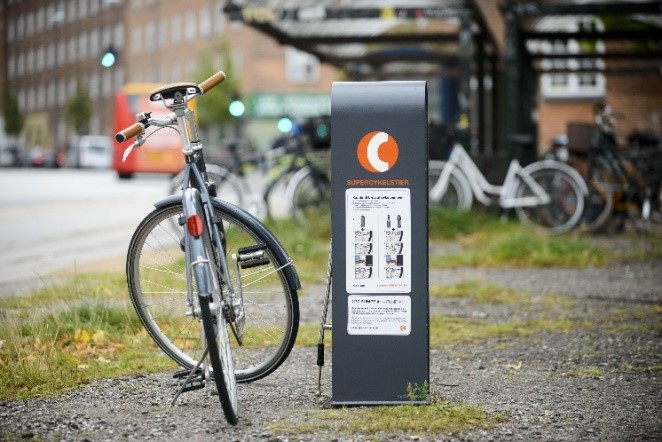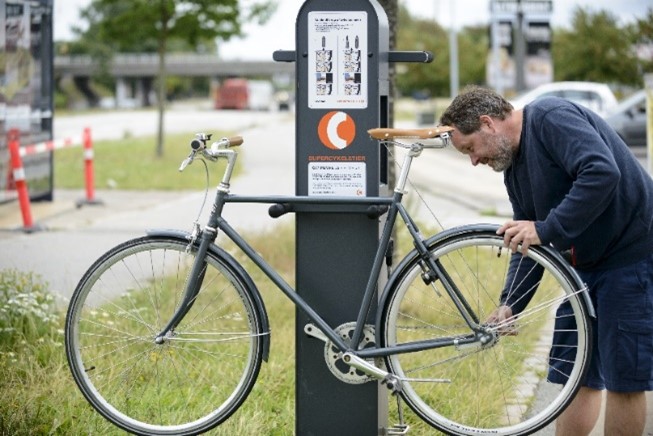Service measures are offerings aimed at the users of the cycle superhighways that contribute to greater cycling happiness and motivate more people to use the routes. This is an obvious area to test new solutions that can create positive awareness of cycle superhighways and cycling. On the cycle superhighways in the Capital Region, the following principles for service measures apply:
Principles for service measures on cycle superhighways
Consistency
There should be a certain level of consistency in the use of service measures across each cycle superhighway and across the network as a whole. Therefore, easily recognizable visual symbols such as the orange color and the cycle superhighway logo should be applied on all service measures.
Focus on high service levels for cyclists
It is important that the additional service measures established on cycle superhighways focus on providing a service to cyclists. Therefore, it is important that the initiatives have a real function that adds value.
Strategic locations for service measures
Service measures should be placed so that they benefit as many people as possible. This could be, for example, at hubs, stations, or at natural stopping points along the cycle superhighway.
Find more information in the side bar on the left
Types of service measures
There are different types of service measures that can be implemented on cycle superhighways to make the cycling experience even better.
It is recommended to draw on experiences from existing routes when deciding which service measures to establish along a new cycle superhighway. New knowledge is continuously collected from both municipalities and citizens that can be used in the development and improvement of service measures. It is also recommended that service measures be realized in close collaboration with test commuters, interest groups, and based on new trends and technologies in the field.
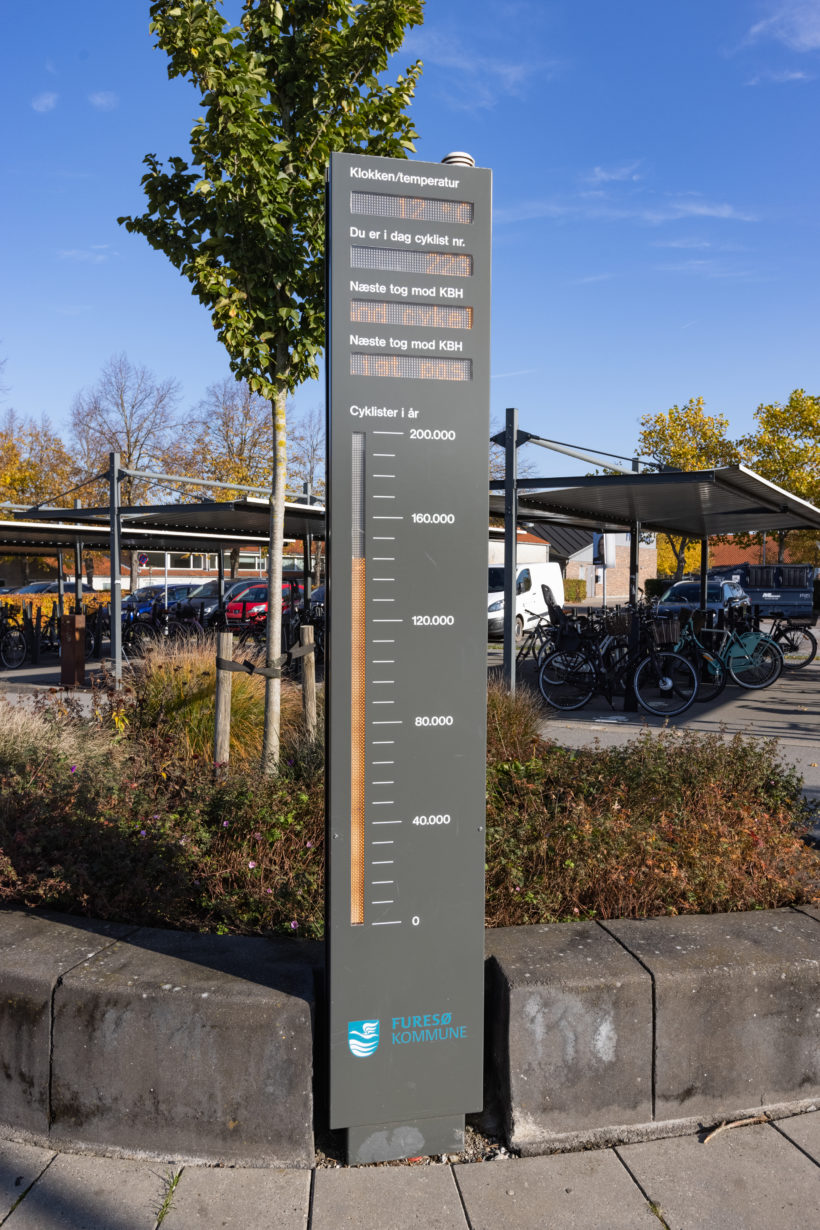
Foot rests
Foot rests are designed to increase comfort for cyclists when waiting at a red light in signalized intersections.
On cycle superhighways, it is recommended to place foot rests at each signalized intersection according to the following principles:
As a general rule, foot rests are placed in all signalized intersections.
Foot rests are not placed at intersections where the route continues straight if there is channelization with a right-turn lane, such as at locations where “right turn on red” is permitted for cyclists.
Foot rests are placed on the right side of the cycle track.
Foot rests are placed approximately 30 cm from the curb, so that cyclists can reach the foot rests with their feet and hands, but do not risk colliding with them.
Foot rests are placed approximately 50 cm before the cyclists’ stop line, so that the front cyclist does not cross the stop line while using the foot rest. This way, the foot rest benefits as many cyclists as possible at the same time.
Foot rests are placed at a height that allow cyclists to rest their foot while still seated on the bike. There should be 35-40 cm between the surface of the cycle track and the surface of the foot rest where the foot is placed.
Contact the Office for Cycle Superhighways for technical drawings of the footrest.
Foot rest Streamers
The surface of foot rests should be covered with a non-slip foil printed with visual and recognisable cycle superhighway symbols. See the technical drawing of a foot rest streamer below:

The measurements are indicative, and it is a good idea to produce the streamer so that it can be mounted on the foot rest surface with a distance to the edge of 0.5-1 cm, thereby avoiding sticking to any welds or causing the streamer to flap outside in any way. This significantly extends durability.
See examples of foot rests and streamers below:
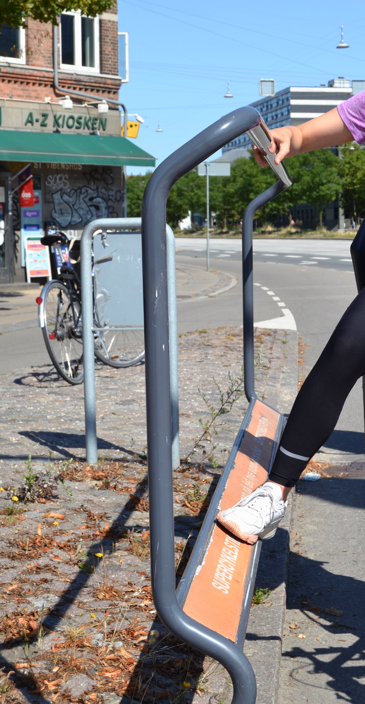
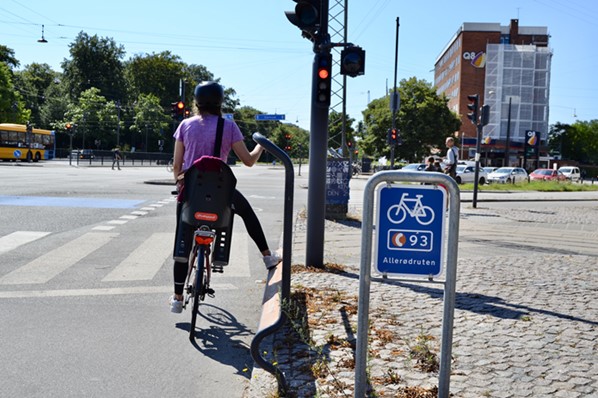
Bicycle counters
In addition to counting the number of cyclists, bicycle counters can also be used to provide cyclists with additional information such as weather, bus and train departures or the number of cyclists on a given day, month or year. Displaying the number of cyclists helps indicate to the cyclist that they are registered and acknowledged.
Bicycle counters also collect and present realtime data that a municipality can use as documentation of cycle traffic.
On cycle superhighways, it is recommended that at least one bicycle counter be placed in each municipality along the route. A counter can, for example, be placed in locations with many cyclists, at stations and hubs, or close to attractions along the route.
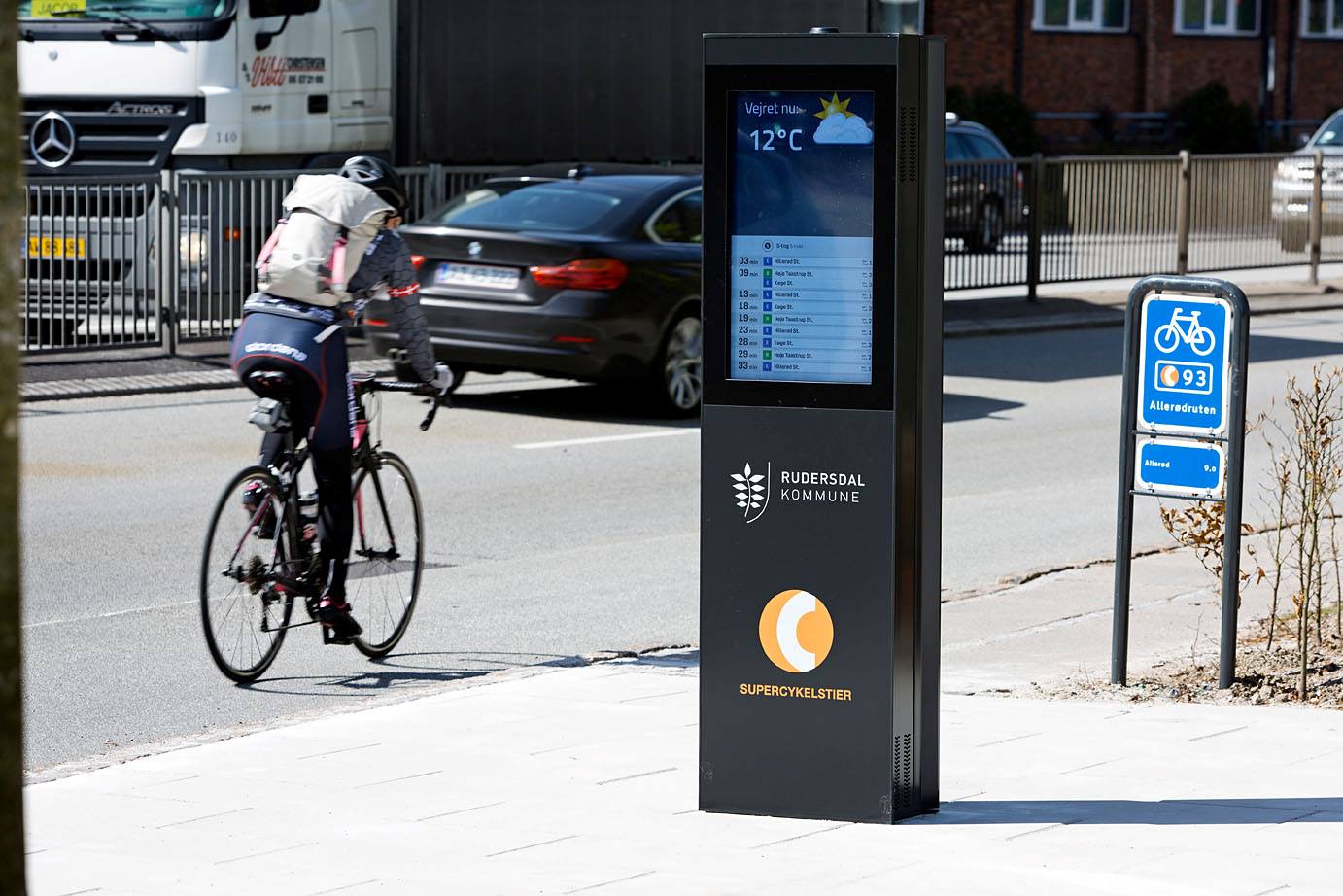
Example of a bicycle counter on the Allerødruten in Rudersdal Municipality. Photo: Cycle Superhighway Collaboration, Capital Region.
Countdown signals in signalized intersections
The purpose of countdown signals is to provide information to cyclists about when the signal will change. In Denmark, if you want to establish countdown signals at intersections, you must apply for permission from the Danish Road Directorate (Vejdirektoratet). In principle, countdowns can be established for both green and red signals. However, the Danish Road Directorate has not yet approved the establishment of countdown signals that count down to red due to traffic safety concerns.
Countdown signals provide valuable service information, especially for cyclists waiting at the stop line and awaiting a green signal. If the purpose of countdown signals is for cyclists to adjust their speed in relation to the signal change as they approach the intersection, attention must be paid to the distance from the intersection and the size of the countdown signal. Countdown signals can be established either before the intersection or within the intersection itself. It is important that the countdown signal is large enough for cyclists to see and read it before they reach the intersection, allowing them enough time to adjust their speed accordingly.
When establishing countdown signals, it is important to consider whether the traffic signals are time- or traffic-controlled. In traffic-controlled signal systems, it may be difficult to establish countdowns measured in seconds, as the green time can be extended or shortened depending on traffic flow.
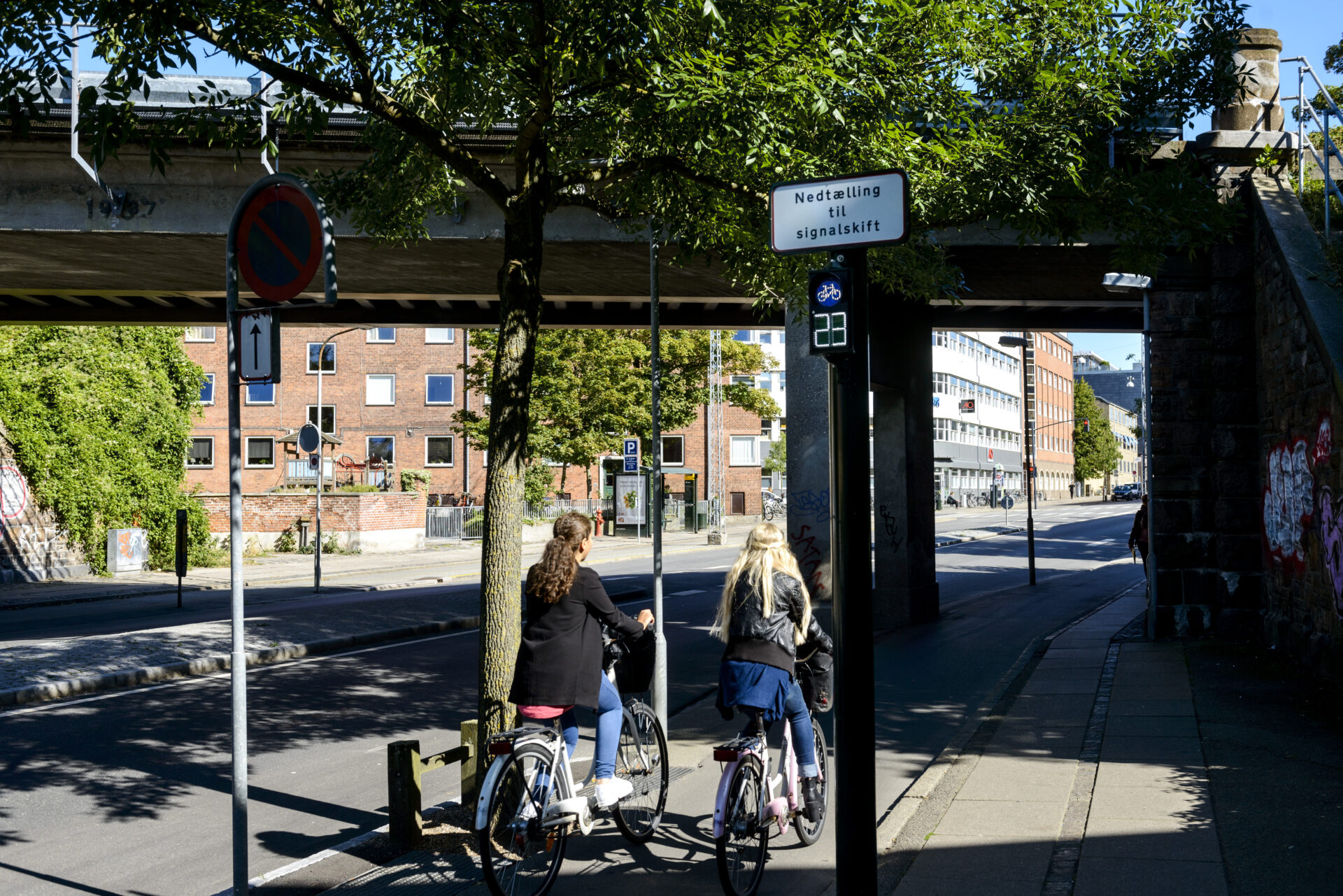
Example of a time-controlled countdown signal on the C99 Albertslundruten in Frederiksberg Municipality. The countdown signal is placed along the cycle track between traffic signals. Photo: Cycle Superhighway Collaboration, Capital Region.
Variable Message Sign (VMS)
The purpose of Variable Message Signs (VMS) is to provide cyclists with additional information along the cycle superhighway. This could include information about alternative routes during roadworks, the number of cyclists who have passed by, or displaying the green wave speed along a stretch. Experience with VMS panels in the City of Copenhagen shows that displaying the green wave speed has an effect on traffic flow to the extent that it can encourage more cyclists to maintain the correct speed to benefit the most from the green wave.
VMS panels for cyclists should not be mounted immediately adjacent to traffic signals, but they can be installed on stretches leading up to intersections.
Furthermore, the signs can also be used in connection with communication about current events or diversions that may affect the route of the cycle superhighway.
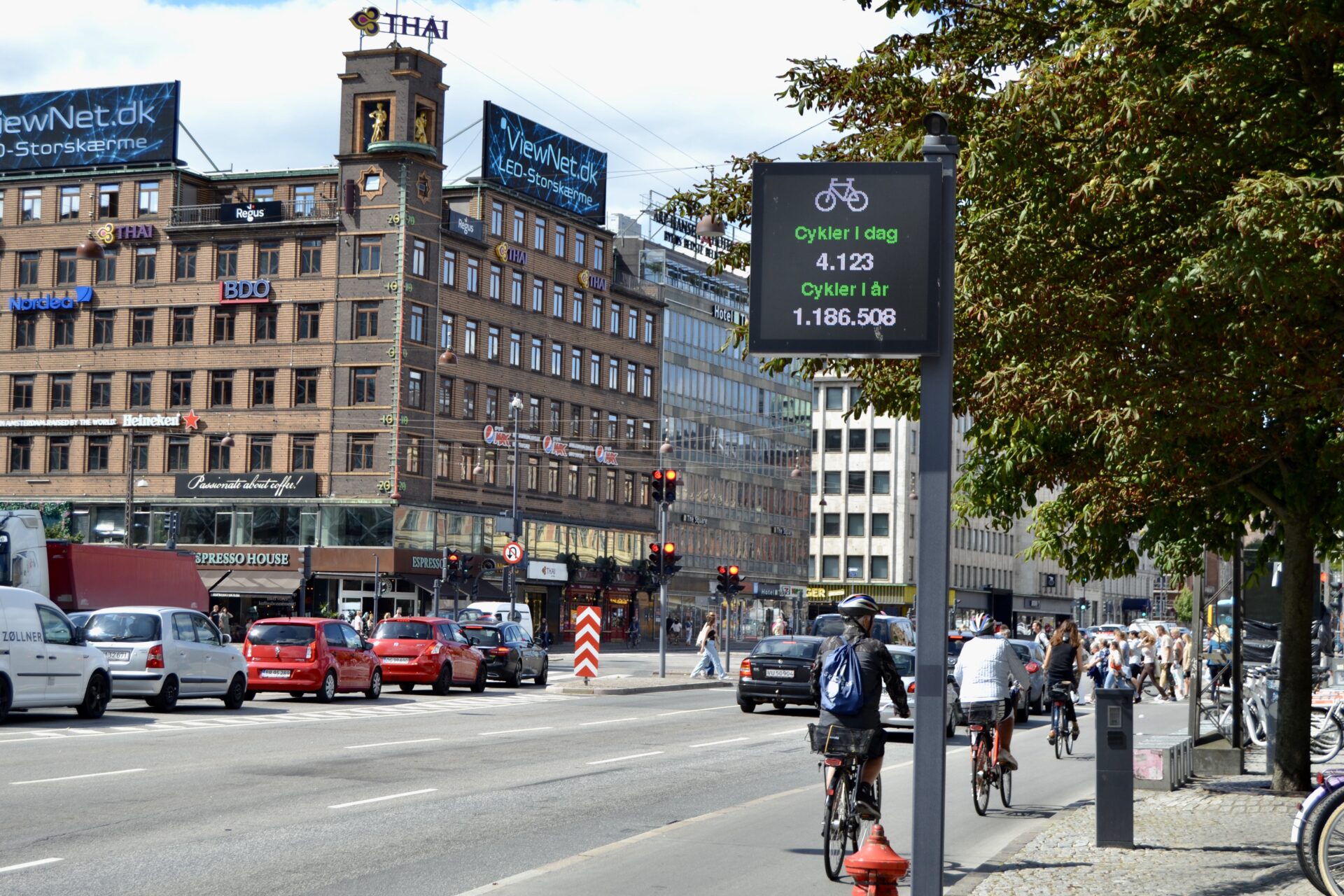
Service stations and cycle pumps
Service stations and cycle pumps provides an extra service on the cycle superhighways so that cyclists have the possibility to fix problems with their cycle along the route.
A service station can encompass various levels of service offerings, from a wide range of tools and cycle wash facilities to more basic repair stands equipped with the most common tools capable of fixing minor defects or inflating cycle tires, allowing cyclists to continue their journey.
Experience from the Cycle Superhighway Collaboration in the Capital Region shows that service stations and cycle pumps require a lot of maintenance and need to be protected against vandalism. It is a good idea to consider this before installing them along the cycle superhighway. It may be beneficial to explore opportunities for collaboration with nearby bike shops, gas stations, or other businesses for a bike service station.
